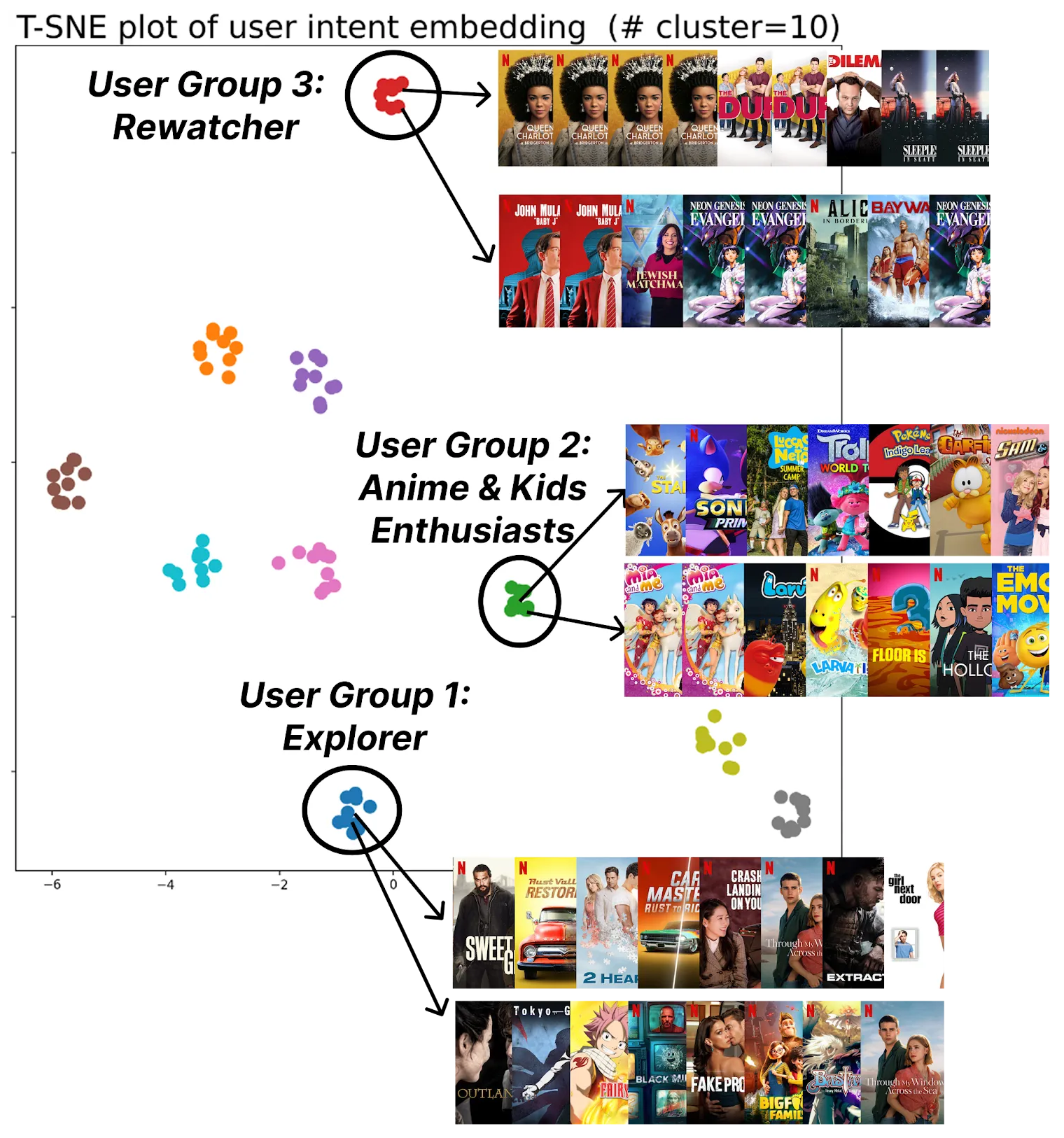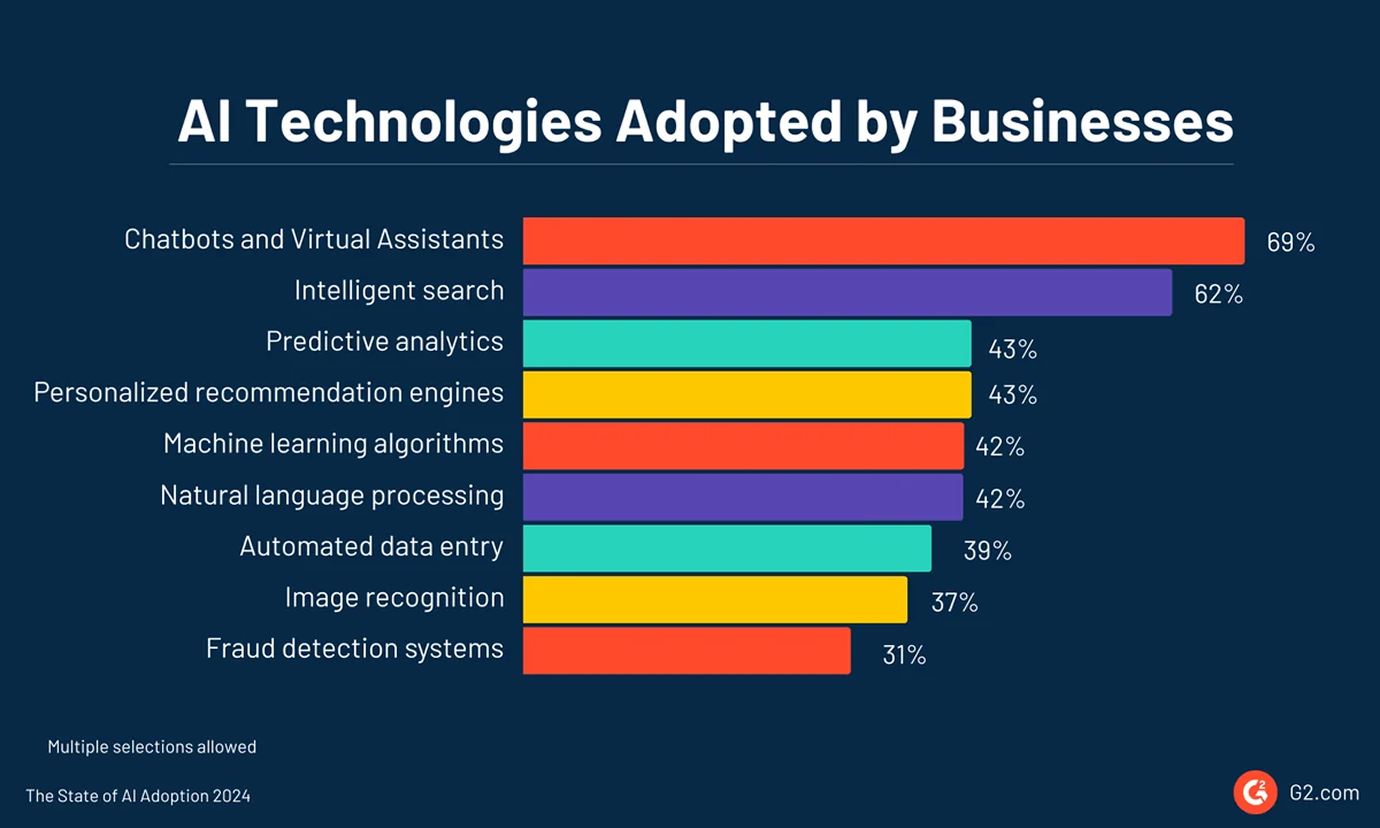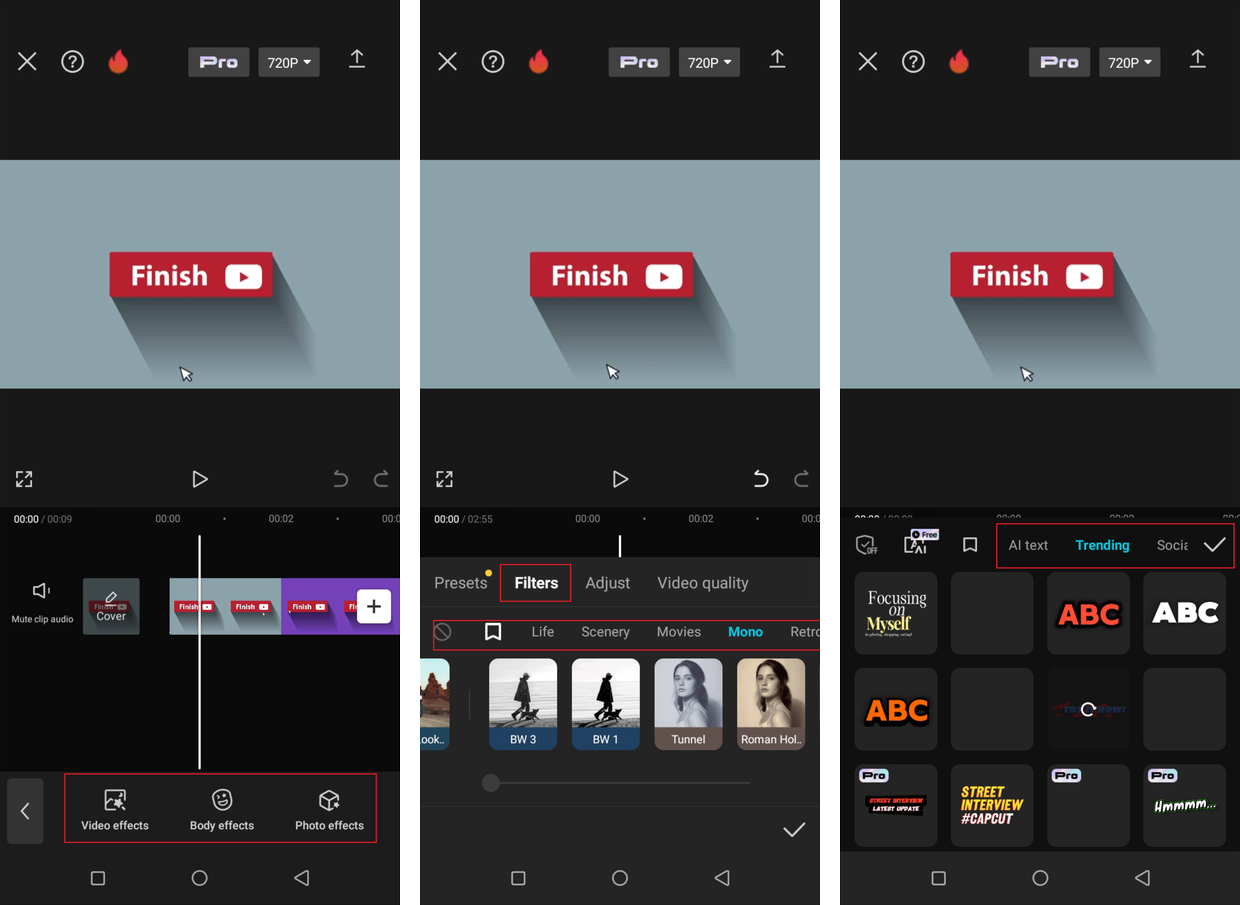The conversation around AI’s place in today’s products has taken on an almost mythical quality. Markets have become caught up in sweeping narratives about technological transformation, rather than tactical product decisions. However, being preoccupied with “how to become an AI product” may actually be a company’s greatest downfall. With the underlying technology evolving so quickly, broad implementation tends to outpace a product’s actual needs. Adding AI without regard for core product loops or user behavior leaves nothing but fragile features and mounting tech debt.
AI works best when its function is grounded in the specific context of the application. In the case of consumer applications, there are a few simple ways to think about where/how AI sits in regards to product and its interaction with users. When it’s wired into core product flows, it doesn’t just enhance the experience, it compounds it––as invisible infrastructure that powers smarter and more personalized applications, as characters that platforms surface front and center as first-class interactions, and as generative tools to empower and supercharge user capabilities.
Begin with what users don’t see. AI’s most enduring impact to date hasn’t come from visible agents or interfaces, but from backend systems that quietly shape interaction at scale.
TikTok's recommendation engine processes over 1B hours of video daily. Spotify analyzes your listening history, maps the acoustic properties of songs, and notices patterns in when you skip or replay tracks. Netflix considers not only what you watch, but also when you pause, or rewind, and even your media setup at home. DoorDash's delivery system routes drivers efficiently, while predicting order volumes and orienting drivers before demand hits, turning gig workers into parts of a vast predictive logistics network.

AI is not just an optimization layer, but a structural force within product strategy and design. When intelligence touches the user experience, even subtle adjustments like ranking logic or weighting signals can produce wide-reaching behavioral effects. Embedding AI into a consumer application means engaging with those mechanics directly. The impact is rarely obvious upfront, but plays out in the loops and activities the system encourages over time.
This infrastructure-based approach means pinpointing the core behavioral loop that drives your product's utility, and determining where intelligence can be embedded to improve that loop invisibly. To make that loop compounding, every user action should feed back into the system—telemetry isn’t just analytics, it’s training data. The smarter your model gets with use, the more defensible the experience becomes.
For example, take prediction markets and trading platforms, where users essentially act as probabilistic agents making bets based on incomplete information. A prediction market might use fine-tuned models to aggregate polling data, token flows, and sentiment across social and news sources. Rather than flooding users with feeds, the system silently ranks and surfaces the signals that are found to be most predictive. On trading platforms, intelligence operates across protocol, market, and user layers. Models might analyze bridge inflows, CEX/DEX flow divergence, or large holder netflows to infer market shifts and volatility. Platforms might correlate social clusters on CT with sudden TVL movements in specific protocols. A DEX aggregator could dynamically route trades based on slippage tolerance, MEV risk, and liquidity fragmentation across AMMs, without ever surfacing a config panel or prompt.
Web2 companies can perform similar analysis (portfolio clustering, risk signals), but the advantage of crypto is the transparency and composability of onchain data. The key is using telemetry—click paths, wallet behaviors, reaction times—to power these systems. AI doesn’t become a feature. It becomes the intangible reason everything just feels a step ahead.
Increasingly, AI agents are going beyond mediating between platform and user, and interacting with each other directly in the background. A portfolio optimizer bot might negotiate directly with a risk engine, or a discovery agent might automatically test A/B content before surfacing it in-feed for everyone. Users never see the exchange, but they feel the effect—sharper recommendations, faster results, longer loops.

For social platforms, AI sharpens the core loop of discovery, signal, and trust without calling attention to itself. Rather than ranking content by likes or replies, platforms can prioritize based on shared onchain behavior like mirrored follows, trading overlap, or token co-ownership. AI can cluster wallets by ENS name, asset patterns, and cross-app behavior to infer identity and filter out sybils—detecting spin-up wallets mimicking influencer behavior or rotating through the same frames to farm visibility. During the InfoFi meta, where attention is a trade and search is a market, AI can learn which creators or KOLs actually move flows, rather than just eyeballs.
As generalized AI becomes more scalable and accessible, AI as tooling becomes a dwindling moat. What begins as a UX differentiator quickly becomes baseline. The real defensibility comes not from the technology itself, but from the data it generates, how tightly it’s coupled to the product’s unique feedback loops, and how much incremental user input can be all that more additive to the product experience. In this sense, infrastructure AI is less about static automation and more about live adaptation—refining the core loop as users move, tap, and explore.
At the other end of the spectrum is a category where AI is the product. Interaction centers on the agent itself: its responses, its personality, its ability to entertain or create presence. Think AI livestreamers, dynamic NPCs, AI idols, digital companions, etc.
The concept of digital personas has existed for decades. Hatsune Miku (2007) has sold out 20,000-seat venues and Lil Miquela (2016) has 2M+ followers on Instagram.
On Twitch, Neuro-sama is an AI VTuber with nearly 1M subscribers who plays games, chats, and sings. Unlike traditional streamers, she doesn’t burn out or sleep, and her persona continuously evolves. AI VTubers stream around the clock, often powered by lightweight orchestration models that react to audience input.

In gaming, interactive digital characters have existed since Neopets and racing sims like Derby Owners Club. Today, dynamic NPCs are shifting from static stand-ins to improvisational actors. Emerging platforms like Inworld and Convai, along with LLM integrations into existing gaming engines, are actively exploring what happens when entire in-game worlds are populated with characters who remember you, change over time, hold wallets, participate in governance, etc.
PLAVE, a fully virtual K-pop boyband, sold over 1M copies of its EP Caligo Pt. 1 in March 2025. On platforms like Xiaohongshu and Bilibili, AI influencers post, reply, and stream using synthetic voices and faces. These characters unlock frictionless and inherently scalable IP—no contracts, no scandals, no labor constraints.
The sudden viability of AI-native characters isn’t coincidental. Language models, memory, and low-cost generation have lowered the technical barrier, but still haven’t solved the harder problem of making users care.
However, a crucial design truth often gets lost—users rarely want to interact with a generic AI “person.” They’re looking for something specific, such as a character that gives them trading alpha, makes them laugh, offers emotional support, or plays a defined role in a shared world. Treating AI personas as standalone novelties often leads to shallow, forgettable interactions. You can’t drop a random AI into your product and expect magic.
The most compelling AI-native experiences are ones where the entire platform is architected around a clear mode of interaction, whether that’s nurturing a relationship with a companion, co-creating stories, or betting on a character’s outcome. Every touchpoint, from UI to incentives to app interaction, should reinforce that relationship between human and agent. In this regard, memory alone also isn’t enough. Memory makes an agent persistent, but lore makes it legible. Without rich narrative context, tone, and history, even the most advanced agent fails to register as more than interface. The goal isn’t just intelligence—it’s immersion.
Between infrastructure and interface lies a fast-expanding middle ground: AI as creative tooling. Intelligence that doesn’t just optimize or entertain, but enables. AI becomes the interface for a new kind of user—no longer a passive consumer, but an active participant in production. This shift is already reshaping user behavior across consumer platforms.
CapCut is a prime example. With a few taps, users can edit or entirely generate highly stylized videos and dynamic filters without understanding a single post-production concept. Platforms like Suno or Udio let users generate full tracks in seconds. Remix* allows users to design and launch hypercasual games for their friends. What used to be solely the domain of professional editors or motion designers is quickly becoming everyday output, and prompting becomes a social activity instead of a solitary one. Authorship becomes communal and remixing becomes part of the interface. The primary loop isn’t consumption, but creation. Tooling creates format. Format creates culture. And culture drives participation.

This loop centers on co-creation. A user inputs a casual or incomplete prompt and receives an AI-generated output, valued for its speed and unpredictability. The result is posted as an open invitation, rather than a broadcast finished product. Others engage by re-prompting, modifying, or extending the original. Each interaction builds on the last, creating a visible chain of participation. Creativity becomes collaborative and iterative, an emergent process shaped by shared input.
This loop centers on distribution and signaling. Users begin with a recognizable format—a viral template, genre prompt, or visual effect—built for remixability and cultural legibility. Through small tweaks, they encode taste, humor, or belonging. The creative act isn’t to invent something new, but to perform variation within a familiar frame. These shared reference points enable rapid spread across hyperspecific communities, where personalization becomes a mechanism for affiliation. The loop sustains itself through repetition, recognition, and subtle differentiation.
As creative friction drops and the volume of output rises, structure and format become more essential, not less. Generative tools lower the threshold to participation, but flood platforms with content faster than users can make meaning from it. The result is a new kind of cognitive and social overload: more to consume, more to ignore.
Participation alone shouldn’t be the goal, it should be coherence. Without constraints or adequate social context-finding, platforms risk becoming saturated with technically novel but culturally unanchored slop. When structured well, generative systems enable emergent social grammars: repeatable loops, templates, and formats that make participation legible and reciprocal. Prompts become templates. Iterations become language. And with the right scaffolding—discovery, visibility, and remix incentives—isolated creativity becomes networked culture.
Across the frenzy of AI-powered platforms flooding the market, a fundamental question persists: not where AI fits in the stack, but how it fits alongside the user. Raw intelligence capability is not enough for an application to succeed. The harder problem is integration: aligning system behavior with user intent in a way that builds trust, enables control, and compounds over time.

Andrej Karpathy frames this clearly. In his view, the strongest AI products don’t prioritize full automation—they prioritize collaboration. Models fail in subtle, non-obvious ways like inappropriate tone, broken context, and hallucinations. But even when they do work, users often don’t want tasks handled end-to-end. They want to remain in the loop by applying judgment and steering key outcomes. Across domains—from code generation to writing assistants to design tools—people gravitate toward systems that scaffold their work, not override it.
Karpathy’s broader point is structural: AI is strongest when it handles scale and repetition, while humans focus on goals, constraints, and taste. He likens this relationship to piloting an Iron Man suit, but not relying on the suit to be entirely autonomous. The real product advantage lies in how tightly intelligence is wired into behavior—how well it supports decision-making, reflects user context, and gets sharper with each interaction.
At a certain point, this pattern becomes obvious. Whether AI is running quietly in the background, fully embodied as a character, or embedded in creative tools, the question is the same: does it actually make the experience better? Not just futuristic, but smoother, more legible, more aligned with what users already want to do. The most compelling uses of AI won’t draw attention to the intelligence itself—they’ll make everything else feel more alive.
—
Disclaimer:
This post is for general information purposes only. It does not constitute investment advice or a recommendation or solicitation to buy or sell any investment and should not be used in the evaluation of the merits of making any investment decision. It should not be relied upon for accounting, legal or tax advice or investment recommendations. You should consult your own advisers as to legal, business, tax, and other related matters concerning any investment or legal matters. Certain information contained in here has been obtained from third-party sources, including from portfolio companies of funds managed by Archetype. This post reflects the current opinions of the authors and is not made on behalf of Archetype or its affiliates and does not necessarily reflect the opinions of Archetype, its affiliates or individuals associated with Archetype. The opinions reflected herein are subject to change without being updated.
Lorem ipsum dolor sit amet, consectetur adipiscing elit, sed do eiusmod tempor incididunt ut labore et dolore magna aliqua. Ut enim ad minim veniam, quis nostrud exercitation ullamco laboris nisi ut aliquip ex ea commodo consequat. Duis aute irure dolor in reprehenderit in voluptate velit esse cillum dolore eu fugiat nulla pariatur.
Block quote
Ordered list
Unordered list
Bold text
Emphasis
Superscript
Subscript
Lorem ipsum dolor sit amet, consectetur adipiscing elit, sed do eiusmod tempor incididunt ut labore et dolore magna aliqua. Ut enim ad minim veniam, quis nostrud exercitation ullamco laboris nisi ut aliquip ex ea commodo consequat. Duis aute irure dolor in reprehenderit in voluptate velit esse cillum dolore eu fugiat nulla pariatur.
Block quote
Ordered list
Unordered list
Bold text
Emphasis
Superscript
Subscript